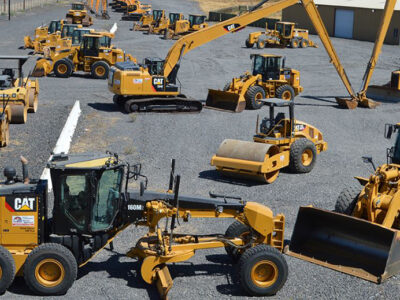The risk of suffering a back injury at work is more common than most California employees realize. According to the Occupational Safety and Health Administration (OSHA), lifting heavy loads is one of the leading causes of workplace injury. Back injuries are not only frequent—they can be serious, long-lasting, and financially devastating.
Data from the U.S. Bureau of Labor Statistics (BLS) indicate that musculoskeletal disorders, including back injuries, account for nearly 30% of all workplace injuries that require time away from work. OSHA also warns that loads heavier than 50 pounds significantly increase the risk of injury, and yet many industries still require workers to perform these tasks daily.
Causes of Workplace Back Injuries
Heavy Lifting and Strain
Many back injuries occur when employees lift, carry, or hold heavy items. OSHA defines a “heavy load” as one weighing more than 50 pounds. Common workplace objects that create risk include conduit bundles, large wire spools, heavy machinery, and tools. Even lifting lighter loads for extended periods can strain the back and shoulders. This happens because holding weight for too long prevents muscles from receiving adequate nutrients, leading to waste buildup and potential injury.
Environmental Factors
Conditions on a jobsite can increase the likelihood of a back injury. Cold environments stiffen muscles, making them more prone to pulling. Excessive heat can lead to fatigue, dehydration, and reduced muscle endurance. Poorly maintained workplaces force employees to twist or bend awkwardly to reach objects. OSHA also notes that poor lighting and visibility increase the chance of tripping and falling, which can cause severe back trauma.
Types of Workplace Back Injuries
Not all back injuries are the same. Some are temporary, while others create lifelong challenges. The most common include:
- Muscle strains and sprains from lifting or sudden movements.
- Herniated or bulging discs occur when spinal discs rupture due to excessive strain.
- Fractured vertebrae from falls or impacts with heavy objects.
- Chronic back pain is caused by repetitive stress or poor ergonomics.
- Sciatica and nerve compression that radiates pain into the legs.
Industries at Highest Risk
Certain industries face much higher risks of workplace back injuries. Construction workers often lift materials in awkward postures, which can lead to falls from heights. Healthcare workers, especially nurses, frequently move or reposition patients. Warehouse employees handle packages under time pressure, and transportation workers face strain from prolonged driving or improper load handling. Even office employees can develop back problems due to poor posture and inadequate ergonomics.
Employer Responsibilities Under OSHA and California Law
Employers in California have a legal duty to protect workers from preventable injuries. OSHA standards and the California Labor Code require employers to:
- Provide safe lifting procedures and ergonomic training.
- Supply mechanical aids such as dollies, forklifts, or hoists.
- Maintain well-lit, clutter-free worksites.
- Offer training in multiple languages when necessary.
- Provide immediate access to workers’ compensation claim forms after an injury.
Failure to meet these responsibilities can result in OSHA or Cal/OSHA citations, as well as increased liability in workers’ compensation claims.
Consequences of Back Injuries
The impact of a back injury can extend far beyond the initial pain. Workers often require hospital care, diagnostic imaging (such as X-rays and MRIs), physical therapy, or surgery. Severe cases may result in long-term disability or permanent impairment. Beyond the physical toll, many injured workers also face financial hardship due to lost wages, as well as emotional distress resulting from a reduced quality of life. Families may struggle with the financial burden if benefits are delayed or denied.
The Workers’ Compensation Claim Process
Filing a claim for a workplace back injury in California involves strict steps and timelines:
- Report the injury immediately – Workers must notify their employer within 30 days.
- Seek authorized medical treatment – Employers must provide access to care, often through a Medical Provider Network (MPN).
- File a DWC-1 claim form – This officially initiates the workers’ compensation process with the Division of Workers’ Compensation (DWC).
- Benefit review – Depending on severity, workers may qualify for medical coverage, temporary total disability (TTD), permanent partial disability (PPD), or vocational retraining.
- Disputes and denials – Insurers may deny claims for lack of medical evidence or argue that injuries are not work-related.
- Appeals – Denied claims can be appealed to the Workers’ Compensation Appeals Board (WCAB).
Without experienced legal help, many workers face delays, denials, or settlements that fail to cover their long-term medical needs.
Average Settlements for Back Injuries
Settlement values vary widely. Minor strains may cover medical bills and a short time off work. Herniated discs requiring surgery often result in larger settlements. In California, back injury settlements typically range from $20,000 to $80,000, though permanent disabilities can result in much higher compensation. Quick settlement offers are common, but workers should consult an attorney before accepting them.
Prevention of Back Injuries on the Job
While employers hold the main responsibility, both management and workers can take steps to reduce risks:
- Employers should provide ergonomic training and invest in lifting devices.
- Workers should follow safe lifting techniques, take breaks to prevent fatigue, and report hazards immediately.
- Proper maintenance of worksites, adequate lighting, and clear walkways also reduce risks.
Even with precautions, not all injuries can be prevented. Unsafe conditions, inadequate training, or employer negligence can still result in serious harm.
Beyond Workers’ Compensation: Additional Legal Options
In some cases involving back injuries, workers may have legal claims that extend beyond workers’ compensation. Defective equipment, unsafe third-party practices, or negligent subcontractors may create additional liability. Families who lose loved ones to workplace back injuries may also pursue wrongful death claims, which provide compensation not available through workers’ compensation, such as pain and suffering or loss of companionship.
Frequently Asked Questions (FAQs)
What are the most common workplace back injuries?
Strains, herniated discs, chronic lower back pain, and nerve compression are the most common.
Can I receive workers’ compensation for a herniated disc in California?
Yes. If the injury happened at work, benefits can include medical care, lost wages, and disability coverage.
What should I do immediately after a workplace back injury?
Notify your employer, seek medical treatment, and file a DWC-1 claim form promptly.
Why are back injury claims denied?
Insurers may argue the injury was not work-related, was preexisting, or that deadlines were missed. Legal help can challenge denials.
What is the average settlement for a back injury in California?
Settlements often range from $20,000 to $80,000, but severe injuries may result in six-figure compensation.
Do I need a lawyer to file a claim?
While not required, having an attorney can improve your chances of receiving full benefits and expedite the process.
If you or a loved one has suffered a workplace back injury in California, you should not have to face the legal process alone. Navigating workers’ compensation, appeals, and possible third-party claims is complex and time-sensitive.
At Hussain & Gutierrez, our experienced legal team is dedicated to protecting workers in Los Angeles and the San Fernando Valley. We fight to ensure that you receive full compensation, medical care, and financial support after a back injury.
Contact Hussain & Gutierrez today for a consultation.



